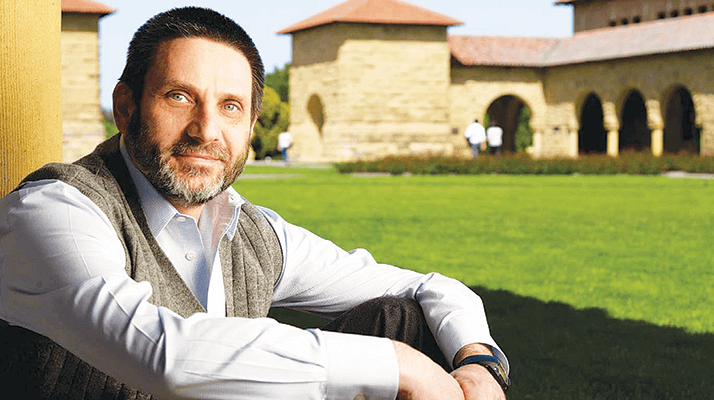
Three products have been commercialized from your research (PASCAL, PEAK PlasmaBlade and Catalys). Which will have the biggest clinical impact? The latest – Catalys – which is a femtosecond system for cataract surgery. In developed countries, thirty percent of the population undergoes cataract surgery so, if adopted, this technology will be very broadly used. It is very visual and its benefits are clear.
What factors have contributed to your success in developing devices? As with any research, a well-formulated question with a defined goal is half way to the solution. I look for well-defined unmet medical needs that may be solvable by the means that I know of. We then set out to prove the principle and build a prototype; if the results look very promising, we form a company. My students and post-docs often lead the product development in these start-ups; they are the brains behind the development of the three products that you mentioned and a few others that are still cooking. Students from the Departments of Physics, Applied Physics and Electrical Engineering are the most capable, in my view, of advancing the field of optoelectronic medical devices; they have the potential to understand the mechanisms of interaction with tissue, design experimental systems from scratch, and build them.
How do you balance translational and basic research? I enjoy both; they are two different sides of my working life. I try to understand the mechanisms of interaction of electric fields and light with biological cells and tissues, and this remains my academic focus. Of course, this work often becomes the foundation for the development of devices and approaches to solve clinical problems. It is very gratifying to see an impact of our products on medical practice. You started out as a theoretical physicist, right? Yes. On finishing at high school in the Soviet Union I couldn’t decide what I wanted to do more, medicine or physics. I remember standing at the corner between the medical school and the university physics department and finally choosing the latter but I maintained a passion for the former. I did my PhD in applied physics in Israel, working on the applications of optics in medicine – in vitro fertilization, dermatological and ophthalmic applications. I really enjoyed this combination and it’s still what I enjoy today.
Yet your current role was arrived at in a serendipitous manner… I came to Stanford as a postdoc in physics, working with high energy ultrashort-pulse lasers. During alignment of one of these lasers I slipped and fell into the beam; it crossed my eye and cut my retina, and I saw a descending curtain of blood. I went to the Emergency Room but they didn’t believe me because there was no external evidence of trauma, and when they flashed light in my eye the pupilar response was normal. “We’ll call a psychiatrist,” they said. Eventually I convinced them to get an ophthalmologist and he told me, that this peripheral cut would heal on its own. We got chatting about ophthalmic lasers, and he suggested that I talk with the new chair of ophthalmology – retinal surgeon Mark Blumenkranz. We met and discussed a few ideas, one of which later became the company PEAK Surgical. Mark invited me to join the Department of Ophthalmology, and our close collaboration began. Oh, and the type of laser that I was injured by is very similar to what later became the Catalys system. Please describe your current research on a photovoltaic retinal prosthesis… When photoreceptors die as a result of retinal degeneration, a person goes blind. But there are two other layers of neurons in the retina that you can stimulate, either electrically or optically, to reintroduce visual information. We developed a wireless chip with 70 ?m pixels that slides under the retina to replace the photoreceptor layer. When you shine light, the photodiodes convert the photons into electric current, like the photovoltaic panels on your roof. The current flows through the retina and stimulates the nearby neurones, which send signals to the brain. We stimulate the retina by projecting images into the eye. Since photovoltaic stimulation is not as sensitive as native photoreceptors, light much brighter than ambient is needed. This is quite doable using video goggles, so it is basically Google Glass for the blind. To avoid stimulation of the residual photoreceptors we use near-infrared light, which is invisible to photoreceptors but can activate silicon photodiodes. Part of the projected image that falls on the chip is converted into current in each pixel, and this stimulates retinal neurones that talk to the brain. There are no wires, so surgery is very easy, and you can tile a large visual field using many small chips. My ultimate hope for this technology is to reach visual acuity of about 20/100, so that patients can read, identify faces, and live an independent life. The current version of the implant is not expected to provide visual acuity better than 20/200 though. We are in the process of licensing the technology and starting development of the human version of the chip and the goggles, and expect that it will be in clinical trials within two years.
What do you enjoy most about your work? It’s a privilege to be paid for satisfying my curiosity on a daily basis. I enjoy the process of discovery - pushing the boundaries of the unknown. And I enjoy seeing ideas thrown around in the lab becoming real products that make physicians and patients happy.
